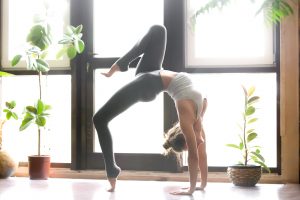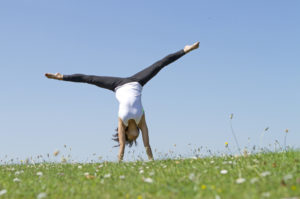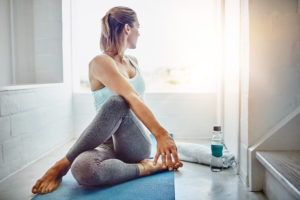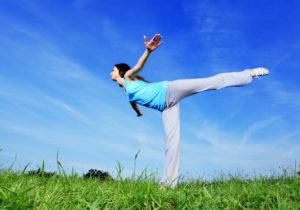As a yoga teacher, I encourage my students to develop an individual home yoga practice. The reason is simple: yoga is so “magic” that can help you address your physical and emotional needs, including changing your mood. When you develop a home yoga practice, you can tailor your sequence to what you need today: your practice will look very different if you’re tired or you’re full of energy, if you’re calm or stressed, if it’s early in the morning or late at night, if you’re menstruating or in the middle of your cycle… you get the idea.
Today, we’ll review some principles, so you can access different groups of postures to help you, depending on your physical and emotional needs.
Back Bends

Backbends are invigorating, energizing and strengthening. By increasing mobility and awareness of the spine backbends improve posture and can help to alleviate some kinds of back and neck pain, as well as open up the shoulders and chest, an area where lots of us hold tension. .
Back bends help you open your heart chakra (for more info, read my post “How To Balance Your Heart Chakra”) and promote self-confidence and creativity, allowing you to live life to the fullest.
Strong backbends can sometimes release stored emotions: frustration, fear, anger, sadness as well as joy and love, so it’s not unusual to feel some of this again as it works through your body. When those emotions are released, you might experience them and might feel a bit off, both physically and emotionally. If this happens and you get overwhelmed, slowly come out of the posture and take child’s pose for a few breaths.
Forward Bends

Besides helping stretch your back, forward folds soothe the nervous system and encourage introspection. They create space between each and every vertebra, increasing circulation to all the nerves that connect to the spine. This allows the nervous system to calm down, reducing anxiety and worry, depression, and insomnia.
These postures also stimulate the internal organs like the spleen, pancreas, liver, intestines and kidneys, which improves digestion and stimulates metabolism.
Forward bends can alleviate some of the common complaints with that time of the month as fresh blood flows to the uterus in this pose. Increasing circulation to this area can also help with infertility, menopause, impotence and sexual desire.
Inversions

Inversions (postures where the head is lower than the heart) use gravity to provide the brain with more oxygen and blood, thus improving mental function, including concentration, memory and processing abilities. This also helps revitalize and reenergize body, mind and soul.
Inversions help detoxify and cleanse the body, by stimulating the lymphatic system and helping release toxins.
Some inversions (such as shoulder stand and downward-facing dog) also work to calm the nervous system, thereby activating the parasympathetic nervous system and producing feelings of balance and calm.
Last but not least, inversions help us shift perspective. Looking at things upside down can stimulate creativity and enlighten new ways to face life problems.
Twists

Twists are great stimulators of the digestive system. When you are in a twist, you compress your digestive organs, causing a temporary lack of circulation. When you release your twist there is a rush or fresh blood that floods your digestive organs, with fresh oxygen and nutrients, which improves their function.
This re-introduction of fresh blood can help to cleanse the cells of any built up waste because with increased circulation comes increased cellular detoxification.
Twists are wonderful postures if you deal with stress or anxiety. These postures will help to open the chest, shoulders and back, all of which can help to decrease feelings of anxiety. You will be releasing stored tension in the body as you twist, which can have a positive effect on your mental state. Breathe deeply and slowly, allowing your mind to calm down.
Hip Openers

Hip opening poses help to open and loosen the joints and muscles around the hips. They help to keep the pelvis and hips in proper alignment, preventing strain and tightness in that area. They also have been known to reduce stress and anxiety.
Balance Postures

Balance poses offer us both physical and mental benefits. Physically, we strengthen our muscles, get to know our center of gravity and how to align ourselves and learn the important yoga principle of rooting down.
Mentally, balance poses teach us how to keep our attention focused, how to find inner center and equanimity—all these are important qualities both on and off our yoga mat.
So, next time you step on your mat, take a moment to check in and ask your self what you need today. Then, start playing with these groups of postures and observe how your mind shifts and you get into a completely new, improved mood.
Happy exploring!
Sonia Ribas
@soniaribascoach


